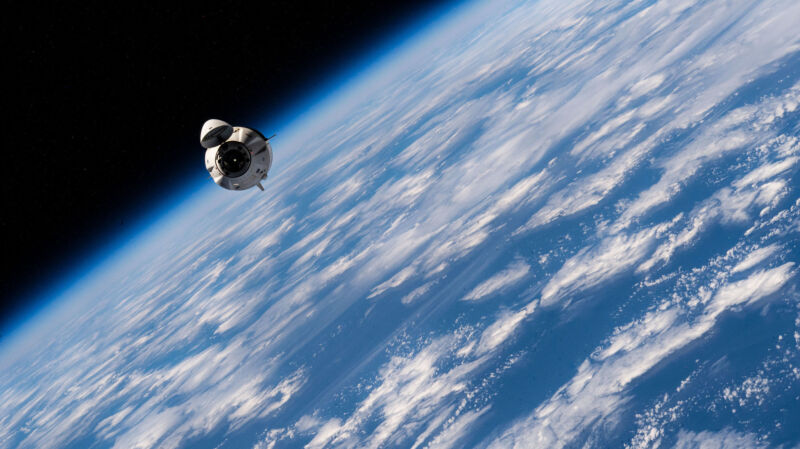
SpaceX
NASA has announced that it will purchase three additional flights for its astronauts to the International Space Station on SpaceX’s Crew Dragon vehicle.
The announcement, posted on the space agency’s website late on Friday afternoon, follows a “request for information” issued by NASA in October seeking the additional transportation to keep “uninterrupted” US access to the space station.
The blog post contained the following somewhat stilted rationale for selecting SpaceX to provide these three crewed flights while not selecting the other potential provider, Boeing’s Starliner spacecraft.
“After a thorough review of the near-term certified capabilities and responses from American industry, NASA’s assessment is that the SpaceX crew transportation system is the only one certified to meet NASA’s safety requirements to transport crew to the space station, and to maintain the agency’s obligation to its international partners in the needed timeframe,” the agency said.
It’s not entirely clear why NASA needed a “thorough” review of the near-term capabilities. SpaceX first demonstrated the safe flight of humans on Crew Dragon in mid-2020 and has since launched three operational crew missions for NASA, with three more scheduled for now through the spring of 2023.
By contrast, Boeing has yet to safely complete an uncrewed demonstration test. Following a December 2019 test flight plagued by software problems, Boeing’s effort to fly a second uncrewed demonstration had to be scrubbed this summer due to leaky oxidizer valves. Now, this “Orbital Flight Test-2” mission is unlikely to occur before mid-2022.
“NASA commends Boeing for its ongoing investigation of the oxidizer isolation valve issue that was discovered ahead of the planned uncrewed Orbital Flight Test-2 mission to the International Space Station in August, prioritizing safety over schedule while working to solve this challenge,” said Phil McAlister, director of commercial spaceflight at NASA, in a statement.
Following this do-over test flight Boeing must then fly a demonstration mission with humans, which probably will take place no earlier than 2023. Should this test go well, Boeing could then begin flying operational missions, carrying NASA and international astronauts to the space station for six-month stays.
In its original procurements seven years ago, NASA agreed to purchase six of these “operational” missions each from SpaceX and Boeing. Because it has been the sole provider of operational missions, SpaceX may run through the end of its original contract by the spring of 2023. As NASA wants to fly crew missions every six months, and it has no guarantee Boeing would be ready by 2023, it took the step of extending SpaceX’s contract now.
NASA still plans to alternate between Crew Dragon and Starliner flights once the vehicles are both operational.
One unanswered question looking forward is whether NASA will ever buy additional flights from Boeing, even if the station’s lifetime is extended to 2028 or beyond. This is because Starliner is contracted to fly on United Launch Alliance’s Atlas V rocket for six missions. However, the Atlas V rocket will then be retired, and Boeing and United Launch Alliance have not indicated whether they will invest in its successor, Vulcan, to human rate that launcher. The rocket manufacturer’s chief executive, Tory Bruno, has said that decision is up to the customer, Boeing.







